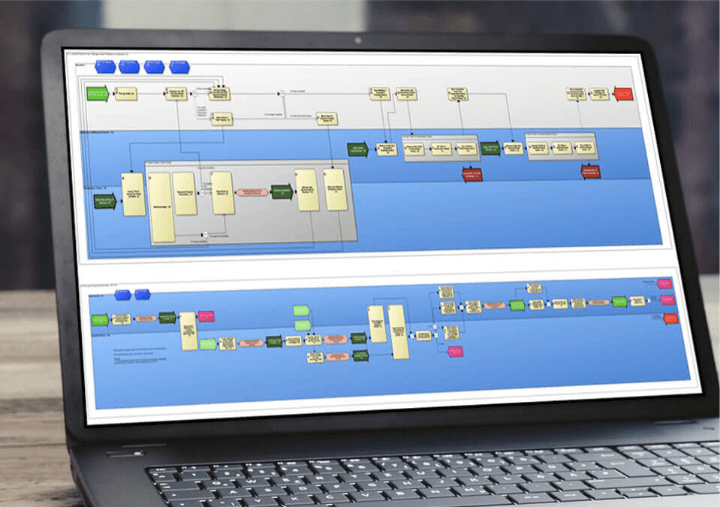Data governance continues to evolve – and quickly.
Historically, Data Governance 1.0 was siloed within IT and mainly concerned with cataloging data to support search and discovery. However, it fell short in adding value because it neglected the meaning of data assets and their relationships within the wider data landscape.
Then the push for digital transformation and Big Data created the need for DG to come out of IT’s shadows – Data Governance 2.0 was ushered in with principles designed for modern, data-driven business. This approach acknowledged the demand for collaborative data governance, the tearing down of organizational silos, and spreading responsibilities across more roles.
But this past year we all witnessed a data governance awakening – or as the Wall Street Journal called it, a “global data governance reckoning.” There was tremendous data drama and resulting trauma – from Facebook to Equifax and from Yahoo to Aetna. The list goes on and on. And then, the European Union’s General Data Protection Regulation (GDPR) took effect, with many organizations scrambling to become compliant.
So where are we today?
Simply put, data governance needs to be a ubiquitous part of your company’s culture. Your stakeholders encompass both IT and business users in collaborative relationships, so that makes data governance everyone’s business.
Data governance underpins data privacy, security and compliance. Additionally, most organizations don’t use all the data they’re flooded with to reach deeper conclusions about how to grow revenue, achieve regulatory compliance, or make strategic decisions. They face a data dilemma: not knowing what data they have or where some of it is—plus integrating known data in various formats from numerous systems without a way to automate that process.
To accelerate the transformation of business-critical information into accurate and actionable insights, organizations need an automated, real-time, high-quality data pipeline. Then every stakeholder—data scientist, ETL developer, enterprise architect, business analyst, compliance officer, CDO and CEO—can fuel the desired outcomes based on reliable information.
Connecting Data Governance to Your Organization
- Data Mapping & Data Governance
The automated generation of the physical embodiment of data lineage—the creation, movement and transformation of transactional and operational data for harmonization and aggregation—provides the best route for enabling stakeholders to understand their data, trust it as a well-governed asset and use it effectively. Being able to quickly document lineage for a standardized, non-technical environment brings business alignment and agility to the task of building and maintaining analytics platforms.
- Data Modeling & Data Governance
Data modeling discovers and harvests data schema, and analyzes, represents and communicates data requirements. It synthesizes and standardizes data sources for clarity and consistency to back up governance requirements to use only controlled data. It benefits from the ability to automatically map integrated and cataloged data to and from models, where they can be stored in a central repository for re-use across the organization.
- Business Process Modeling & Data Governance
Business process modeling reveals the workflows, business capabilities and applications that use particular data elements. That requires that these assets be appropriately governed components of an integrated data pipeline that rests on automated data lineage and business glossary creation.
- Enterprise Architecture & Data Governance
Data flows and architectural diagrams within enterprise architecture benefit from the ability to automatically assess and document the current data architecture. Automatically providing and continuously maintaining business glossary ontologies and integrated data catalogs inform a key part of the governance process.
The EDGE Revolution
By bringing together enterprise architecture, business process, data mapping and data modeling, erwin’s approach to data governance enables organizations to get a handle on how they handle their data and realize its maximum value. With the broadest set of metadata connectors and automated code generation, data mapping and cataloging tools, the erwin EDGE Platform simplifies the total data management and data governance lifecycle.
This single, integrated solution makes it possible to gather business intelligence, conduct IT audits, ensure regulatory compliance and accomplish any other organizational objective by fueling an automated, high-quality and real-time data pipeline.
The erwin EDGE creates an “enterprise data governance experience” that facilitates collaboration between both IT and the business to discover, understand and unlock the value of data both at rest and in motion.
With the erwin EDGE, data management and data governance are unified and mutually supportive of business stakeholders and IT to:
- Discover data: Identify and integrate metadata from various data management silos.
- Harvest data: Automate the collection of metadata from various data management silos and consolidate it into a single source.
- Structure data: Connect physical metadata to specific business terms and definitions and reusable design standards.
- Analyze data: Understand how data relates to the business and what attributes it has.
- Map data flows: Identify where to integrate data and track how it moves and transforms.
- Govern data: Develop a governance model to manage standards and policies and set best practices.
- Socialize data: Enable stakeholders to see data in one place and in the context of their roles.
If you’ve enjoyed this latest blog series, then you’ll want to request a copy of Solving the Enterprise Data Dilemma, our new e-book that highlights how to answer the three most important data management and data governance questions: What data do we have? Where is it? And how do we get value from it?



